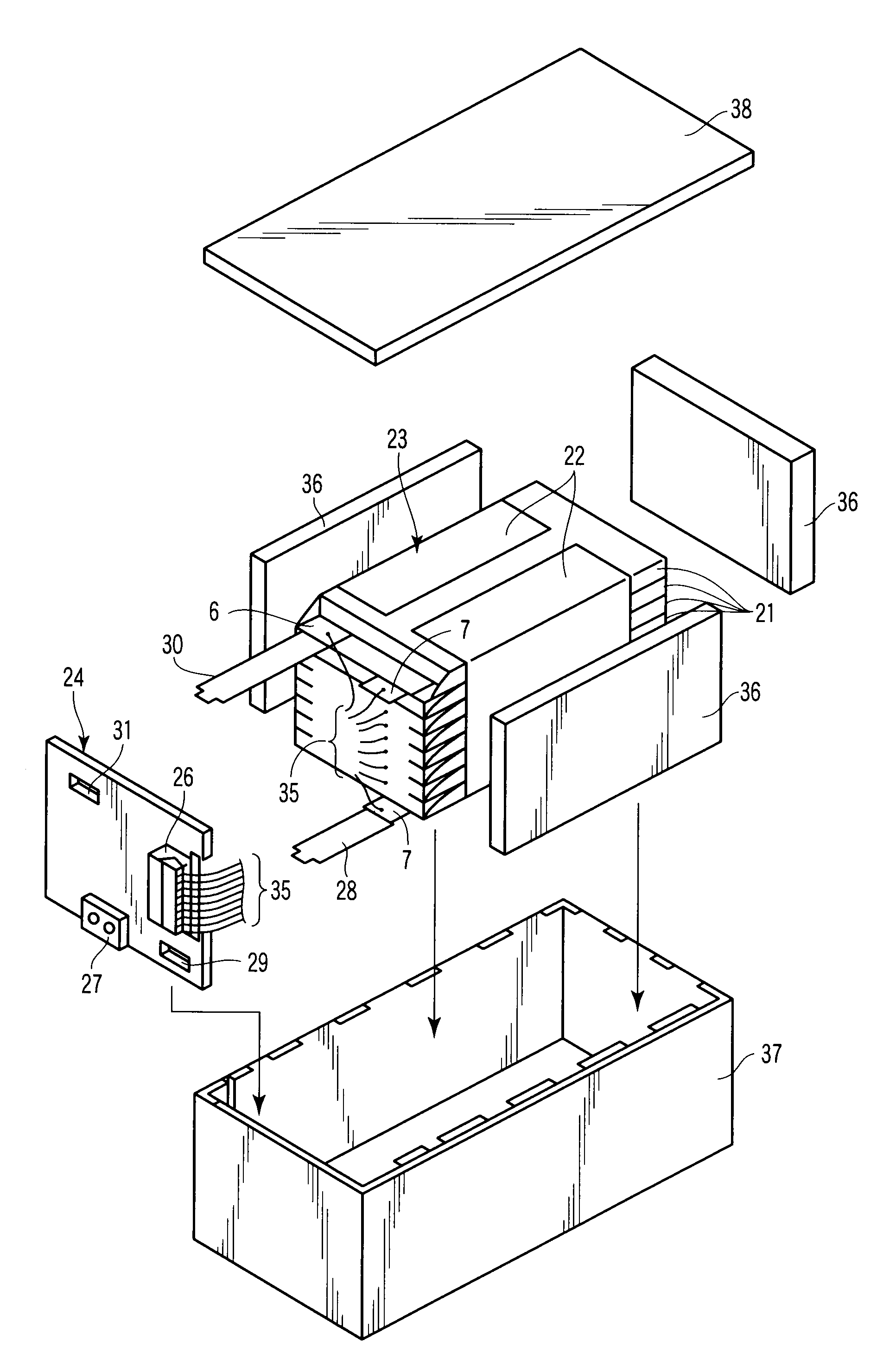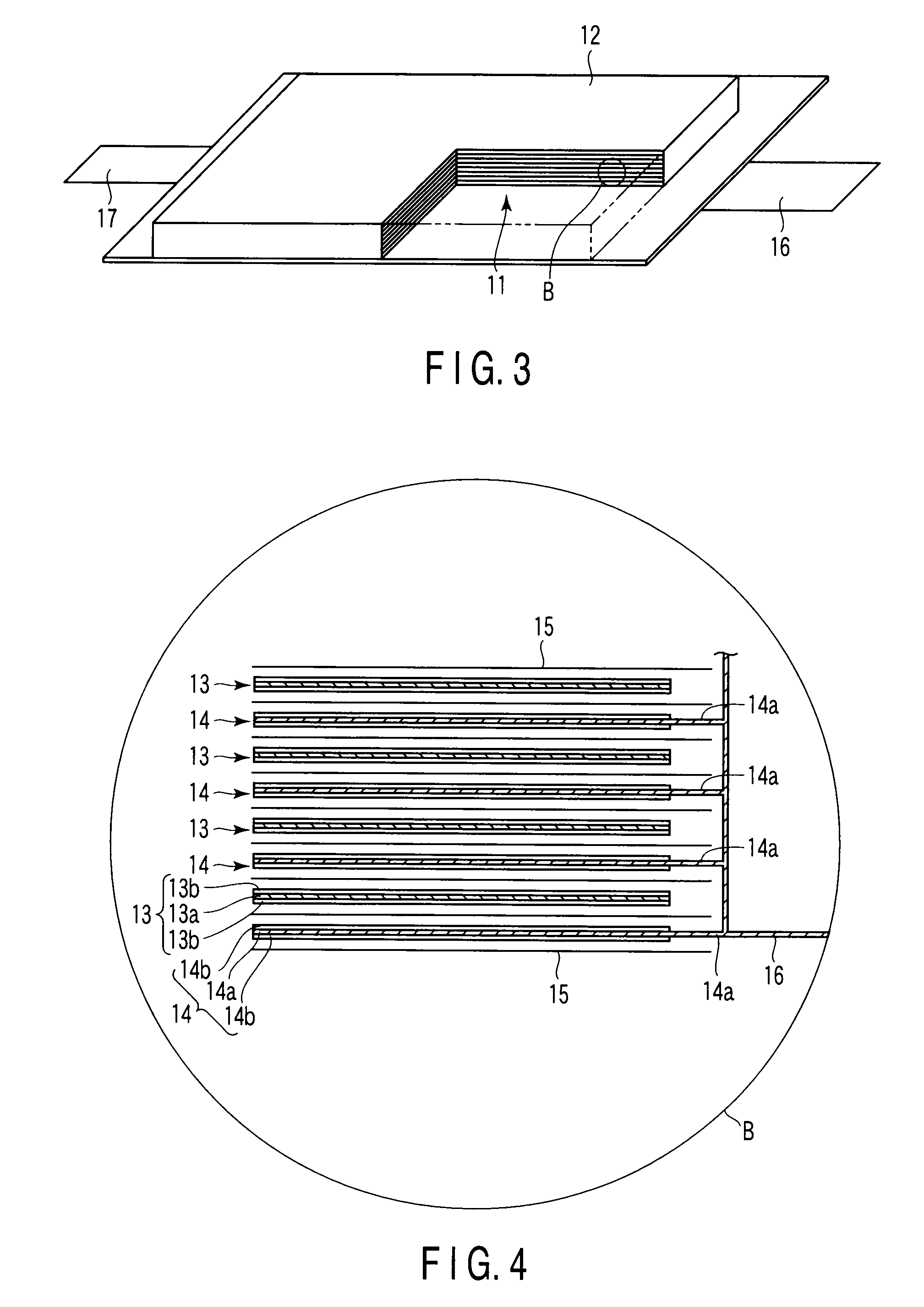Active material of negative electrode for non-aqueous electrolyte battery, method of manufacturing active material of negative electrode for non-aqueous electrolyte battery and non-aqueous electrolyte battery
a technology of negative electrode and active material, which is applied in the direction of alkali titanates, cell components, cell component details, etc., can solve the problems of reducing the capacity density of conventional titanium oxides, affecting the performance of secondary batteries, and causing heat build-up or ignition of batteries
- Summary
- Abstract
- Description
- Claims
- Application Information
AI Technical Summary
Benefits of technology
Problems solved by technology
Method used
Image
Examples
first embodiment
[0027]An active material of a negative electrode for a non-aqueous electrolyte battery according to this first embodiment comprises lithium titanium composite oxide represented by a general formula of: Li2+xTi4O9 (wherein x is 0≦x≦4). The lithium titanium composite oxide is exhibited a highest intensity peak of (002) crystal face at 2θ=10°±2°, a peak of (402) crystal face at 2θ=30°±2° and a peak of (020) crystal face at 2θ=48°±2° as measured by a powder X-ray diffractometer using Cu—Kα-ray source. A half band width of the highest intensity peak exhibited the lithium titanium composite oxide is 0.5° / 2θ to 3° / 2θ.
[0028]If the half band width of the highest intensity peak is less than 0.5° / 2θ, the crystallizability of lithium titanium composite oxide would become higher, thus possibly deteriorating the charge / discharge capacity. On the other hand, if the half band width exceeds 3° / 2θ, the crystallizability of lithium titanium composite oxide would become very low, thus possibly resultin...
second embodiment
[0044]A method of manufacturing an active material (lithium titanium composite oxide) of a negative electrode for a non-aqueous electrolyte battery according to the second embodiment will be explained in detail as follows.
[0045]First of all, potassium titanate is pulverized to obtain potassium titanate powder having an average particle diameter of 0.1 to 5 μm.
[0046]The potassium titanate can be used not only the potassium titanate that can be synthesized by means of a flux method, for example, but also the potassium titanate that is ordinarily available in the market as a reagent.
[0047]The step of pulverization should preferably be performed by using a potassium titanate material which has been washed with pure water to remove impurities and then dried. More specifically, the pulverization should preferably be performed using a vessel charged with zirconia balls having a diameter of 10 to 15 mm and contained in the vessel at a ratio of one per 100 cm3 in volume of the vessel and und...
third embodiment
[0056]The non-aqueous electrolyte battery according to a third embodiment is equipped with an outer case. The positive electrode, the negative electrode and the separator are all placed inside this outer case. A non-aqueous electrolyte is also accommodated in this outer case.
[0057]Next, details of the outer case, the negative electrode, the non-aqueous electrolyte and the separator will be discussed as follows.
[0058]1) Outer Case
[0059]The outer case is formed of a laminate film having a thickness of not more than 0.5 mm or a metallic vessel having a thickness of not more than 1.0 mm. More preferably, the thickness of the metallic vessel is 0.5 mm or less.
[0060]The configuration of the outer case may be a flat type (thin type), a square type, a cylindrical type, a coin type or a button type. This outer case may be variously designed depending on the size thereof. For example, it can be designed as an outer case for a small battery which can be mounted, for example, on mobile electron...
PUM
 Login to View More
Login to View More Abstract
Description
Claims
Application Information
 Login to View More
Login to View More - R&D
- Intellectual Property
- Life Sciences
- Materials
- Tech Scout
- Unparalleled Data Quality
- Higher Quality Content
- 60% Fewer Hallucinations
Browse by: Latest US Patents, China's latest patents, Technical Efficacy Thesaurus, Application Domain, Technology Topic, Popular Technical Reports.
© 2025 PatSnap. All rights reserved.Legal|Privacy policy|Modern Slavery Act Transparency Statement|Sitemap|About US| Contact US: help@patsnap.com



